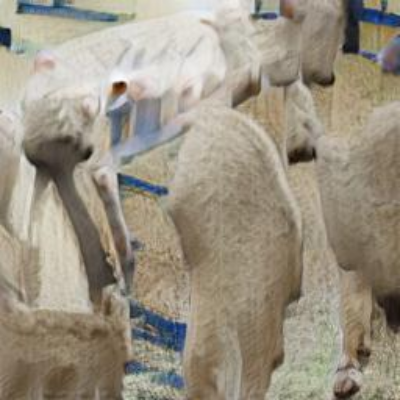“Blood is toward the end of the spectrum of stigmatized and taboo foods” for Americans, says Amy Bentley, a professor of food studies and expert on culinary taboos at New York University.
Source: US Geological Survey, “American Bullfrog,” wikimedia.org, July 10, 2015 Discussion Questions – Things to Think About Several cultures, including those of many Native American tribes , consider animal dissection taboo.
26, 2019 Mary Caton, “Villanova Students Try Hand at Virtual Frog Dissection,” windsorstar.com, Nov. 27, 2019 Nicole Shine, “The Battle over High School Animal Dissection,” psmag.com, June 14, 2017 AP, “Fake Frogs in School Dissections Eliminate Gross-Out-Factor,” wtop.com, Dec. 31, 2019 Deborah H. Williams and Gerhard P. Shipley, “Cultural Taboos as a Factor in the Participation Rate of Native Americans in STEM,” International Journal of STEM Education ,” Apr.
But the tradition is declining as the nation increasingly embraces the idea of dogs as pets, with eating them now something of a taboo among young South Koreans.
Surprisingly, the team’s taboo action was unanimously backed by viewers. Rather than lingering thinkpieces on nature doc ethics, the segment sparked a wave of supportive quips online. “Some payback for the damage humanity is doing to the natural world,” one viewer commented; “Finally: proof humans don’t suck all the time,” added another.
For centuries, Japanese people considered eating beef especially taboo.
For both religious and practical reasons, the Japanese mostly avoided eating meat for more than 12 centuries. Beef was especially taboo, with certain shrines demanding more than 100 days of fasting as penance for consuming it. The story of Japan’s shift away from meat began with the arrival of Buddhism from Korea in the 6th century. At that time, the Japanese were meat eaters. Venison and wild boar were particularly popular. Aristocrats enjoyed hunting and feasting on deer entrails and wild fowl.
In 675 A.D., Emperor Tenmu issued the first official decree banning consumption of beef, horse, dog, chicken, and monkey during the height of farming season from April to September. As time went on, the practice would be solidified and expanded into a year-round taboo against all meat eating.

Meat was still taboo among the upper classes, but it was often treated as a special food with medicinal properties. In the 18th century, the Hikone Clan sent their annual gift of beef pickled in sake to the shogun in packages labeled as medicine.
According to Ishige, “the Buddhist concept of the transmigration of souls and the taboo on mammal meat became linked, and the belief spread that a person who ate the flesh of a four-legged animal would after death be reincarnated as a four-legged animal.” One government decree stated that anyone who’d eaten wild goat, wolf, rabbit, or raccoon dog was required to repent for five days before visiting a shrine. Those who’d eaten pork or venison, however, were required to repent for 60 days. For eaters of beef and horse meat, it was 150 days. On the rare occasions that they did eat meat, Japanese people cooked it on fires outside the home and avoided looking directly at their altars afterwards so as not to contaminate them.
The Meiji government began to chip away at the ancient dietary taboos.
Lastly, but most impactful for the women of the community, is the belief that childbirth in the village is taboo.
“Because of these taboos, there has never been any bloodshed, crime and so on.
We are very proud to be bound by those taboos.”
According to Atlas Obscura, for 1,200 years prior to 1872, the consumption of meat was considered a real taboo . If a regular Japanese person was seen to be eating the flesh of an animal, they would face serious punishment.
An undisturbed patch of vegetation on the outskirts of a village or part of a forested area dedicated to local folk deities or ancestral spirits and protected by local people through taboos incorporating spiritual and ecological values are called sacred groves.
Transgression of any taboo is believed to cause crop failure, sickness in the family or to livestock and invites punishment by the villagers.
The taboos, rituals and beliefs associated with the groves, supported by mystic folklore, have been the prime motivating factors for preserving them in pristine condition.

What made communities demarcate a patch of trees as sacred, and create taboos for its preservation, including bans on tree felling, hunting and even the removal of dead leaves and fruits? The myth associated with each grove reveals the ecological reason why it was worthy of preservation.
The consumption of cow urine in modern India has been marketed by politicians and religious leaders as healthy alternatives to existing diets, while at the same time beef consumption is seen as a taboo despite evidence showing that beef consumption was indispensable in the Vedic period.
There are myths and legend which explain how totemic species or food taboos are adopted.

The English word ‘taboo’ is derived from the Polynesian word ‘tabu’ which means simply ‘to forbid’, ‘forbidden’. ‘Taboo’ used; indifferently as adjective, noun, or verb, was introduced into English by Captain Cook. He first met the word ‘tabu’ in 1777, at Tonga. According to Sigmund Freud, it is difficult to find a translation of the Polynesian word ‘tabu’ which is the same with the ancient Romans word ‘sacer’, ‘ayoc’ of the Greeks and ‘kadesh’ of the Hebrew. The meaning of ‘tabu’ diverges in two contrary directions: ‘sacred’, ‘consecrated’ on the one hand; and ‘dangerous’, ‘forbidden’, ‘unclean’ on the other. The converse of tabu in Polynesian is ‘noa,’ which means common or general accessible. It is principally expressed in prohibitions and restrictions. It can be employed to any sort of prohibition. A rule of etiquette, an order issue by a chief, an injunction to children not to meddle with the possessions of their elders, may all be expressed by the use of the word ‘tabu’. It is by no means confined to any one geographical region, however, but in common to all primitive peoples. The idea of taboo is of great importance from a psychological, sociological, and religious point of view.
The text of this article was generated by the Breaking The Silence system that collected 11 news articles posted on the web from January 2019 to September 2020 and clustered for the taboo subjects related to animals














































































